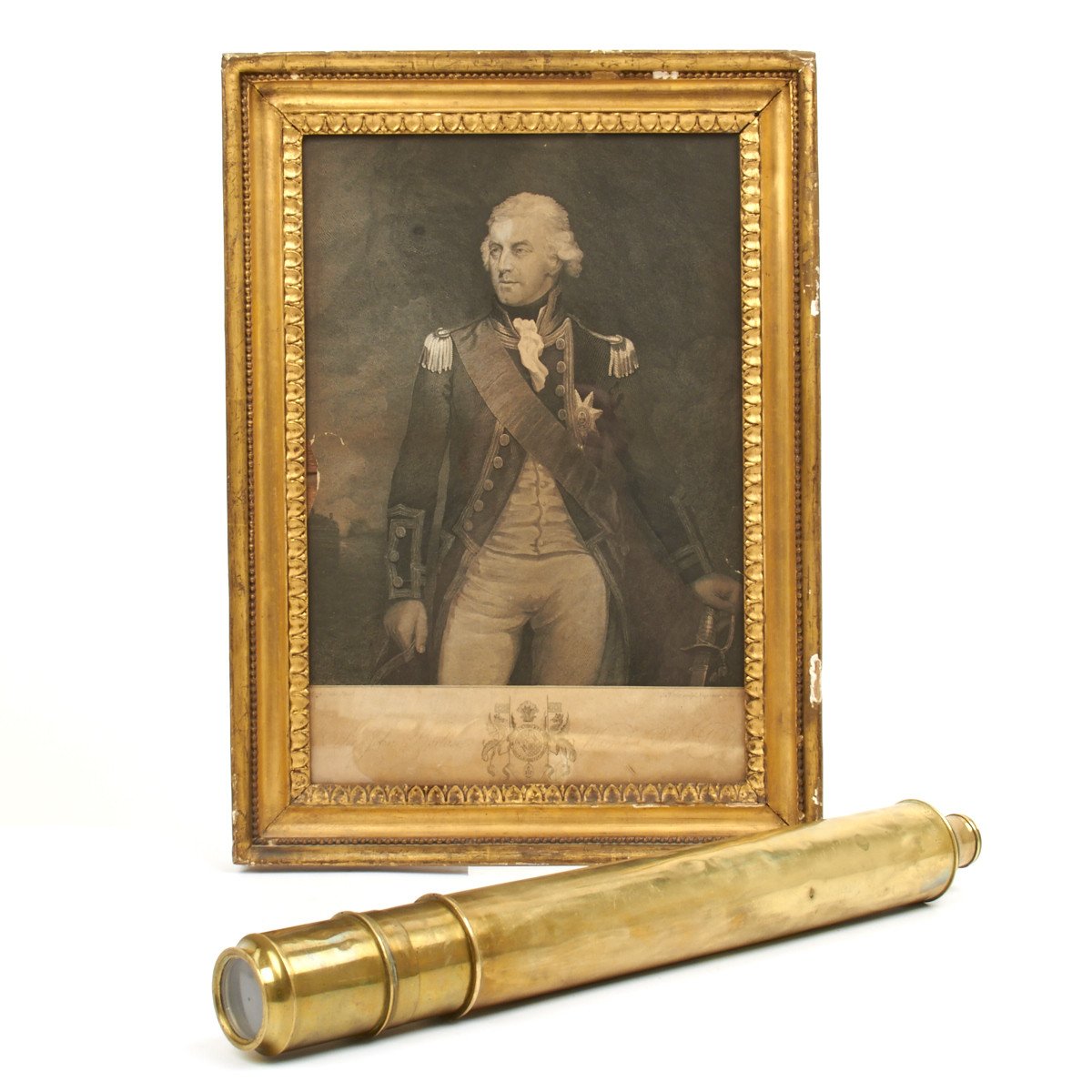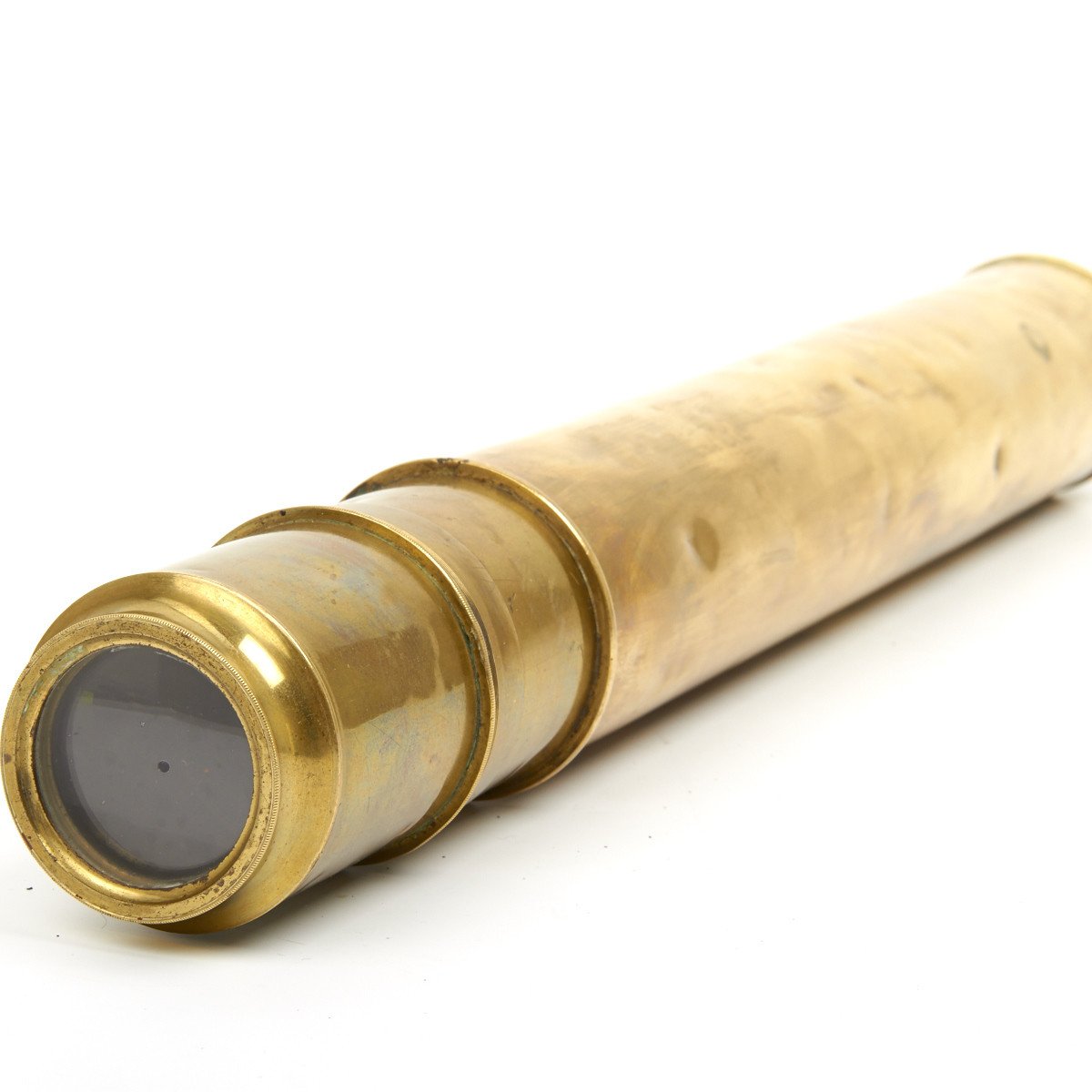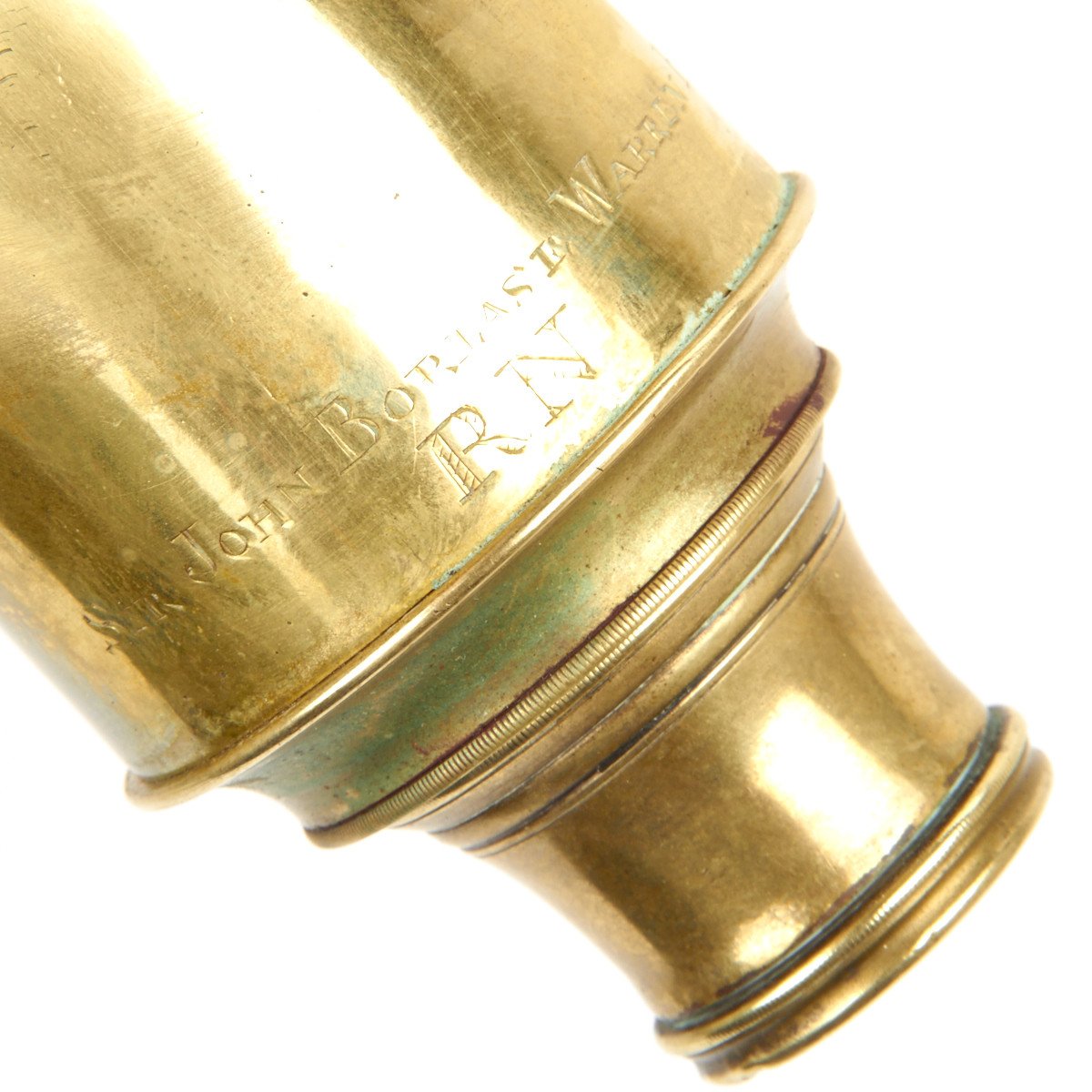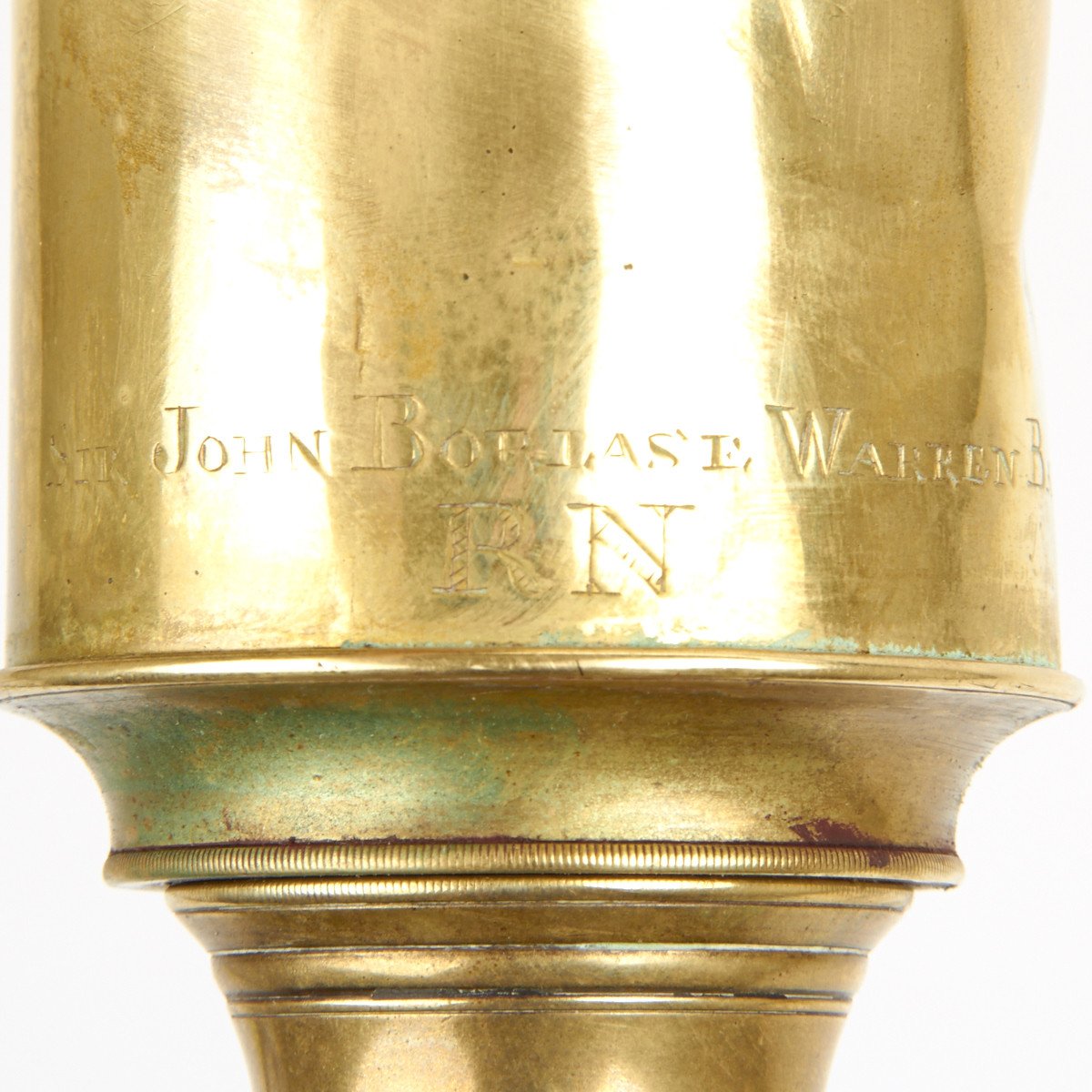Original 18th Century Brass Telescope Marked – Sir John Borlase Warren, Bart, RN Original Items
$ 1.295,00 $ 323,75
Original Item: One-of-a-kind. This is a very attractive all brass two draw seaman’s telescope dating from the latter part of the 1700s. There are one or two small dents but it appears to have been well looked after with regular polishing from being continually on display. Most surprisingly is that the optics are excellent and still functional.
Around the rear of the outer cylinder is an engraving that reads:
SIR JOHN BORLASE WARREN, BART
RN
Sir John Borlase Warren, 1st Baronet (2 September 1753 27 February 1822), was an English admiral, politician and diplomat. Born in Stapleford, Nottinghamshire, he was the son and heir of John Borlase Warren (died 1763) of Stapleford and Little Marlow. He entered Emmanuel College, Cambridge in 1769, but in 1771 entered the Royal Navy as an able seaman; in 1774 he became member of Parliament for Great Marlow; and in 1775 he was created a baronet, the baronetcy held by his ancestors, the Borlases, having become extinct in 1689.
His career as a seaman really began in 1777, and two years later he obtained command of a ship. In April 1794, as Commodore of the frigate squadron off the northwest French coast assisting in the blockade of Brest, Warren and his squadron captured a number of French frigates. In 1795, he commanded one of the two squadrons carrying troops for the Quiberon expedition and in 1796 his frigate squadron off Brest is said to have captured or destroyed 220 vessels. In October 1798, a French fleet carrying 5,000 men sailed from Brest intending to invade Ireland. The plan was frustrated in no small part due to the squadron under his command during the Action of 12 October 1798.
In 1802, he was sworn of the Privy Council and sent to St. Petersburg as ambassador extraordinary, but he did not forsake the sea. In 1806 he captured a large French warship, the Marengo, at the Action of 13 March 1806. He was commander-in-chief on the North American Station from 1807 to 1810. He became an Admiral in 1810, and was commander-in-chief on this Station again from 1813 to 1814. During the British invasion he led a detail of British troops that occupied Havre de Grace and set fire to much of the town, including the home of Commodore John Rodgers. He died on 27 February 1822.
There is a monument to him in St. Mary’s Church, Attenborough in Nottinghamshire. A popular figure in the area of his birth, there are a number of pubs named after him in Nottingham and nearby towns.
Accompanying this telescope we include an old glazed and gilt framed print of the portrait of SIR JOHN BOLASE WARREN by DANIEL ORME painted in 1799 that we received along with the telescope.
A fine all brass two draw seaman’s telescope that belonged to an accomplished officer of the Royal Navy.
Fast Shipping with Professional Packaging
Thanks to our longstanding association with UPS FedEx DHL, and other major international carriers, we are able to provide a range of shipping options. Our warehouse staff is expertly trained and will wrap your products according to our exact and precise specifications. Prior to shipping, your goods will be thoroughly examined and securely secured. We ship to thousands clients each day across multiple countries. This shows how we're dedicated to be the largest retailer on the internet. Warehouses and distribution centres can be located throughout Europe as well as the USA.
Note: Orders with more than one item will be assigned a processing date depending on the item.
Before shipping before shipping, we'll conduct a thorough inspection of the items you have ordered. Today, the majority of orders will be delivered within 48 hours. The delivery time will be between 3-7 days.
Returns
The stock is dynamic and we cannot completely manage it because multiple stakeholders are involved, including our factory and warehouse. So the actual stock may alter at any time. It's possible that you may not receive your order once the order has been made.
Our policy is valid for a period of 30 days. If you don't receive the product within 30 days, we are not able to issue a refund or an exchange.
You can only return an item if it is unused and in the same state as the day you received it. You must have the item in its original packaging.
Related products
Uncategorized
Uncategorized
Uncategorized
Uncategorized
Uncategorized
Uncategorized
Australian WWII Owen MK1 Machine Carbine SMG Custom Fabricated Replica with Sling Original Items
Uncategorized
Uncategorized
Uncategorized
Uncategorized
Uncategorized
Uncategorized
Uncategorized
Uncategorized
Uncategorized
Uncategorized
Band of Brothers ORIGINAL GERMAN WWII Le. F.H. 18 10.5cm ARTILLERY PIECE Original Items
Uncategorized
Uncategorized
Uncategorized
Angolan Rebel 1970s era 60mm Inert Display Mortar from Angolan Civil War Original Items
Uncategorized













































































